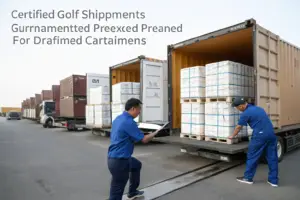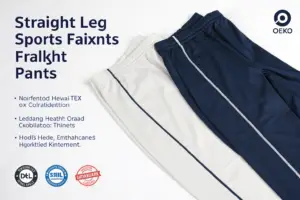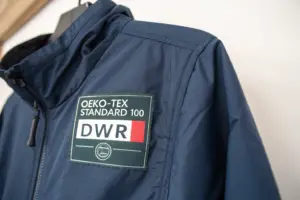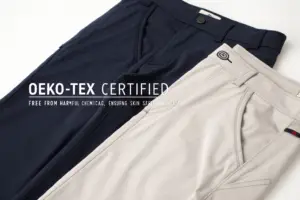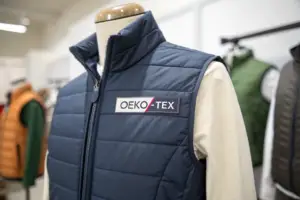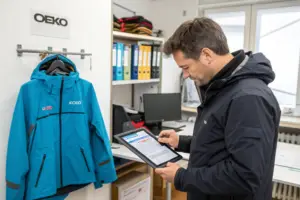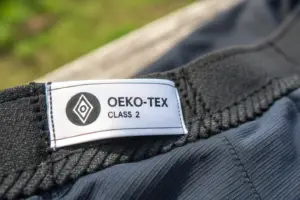The process of exporting goods mainly includes the quotation, order, payment method, preparation, packaging, customs clearance procedures, loading, transportation insurance, bill of lading, and settlement of foreign exchange.
1 Quotation
In the process of international trade, the first step is product inquiry and quotation. Among them, the quotation for export products mainly includes the quality level of the products, the specifications of the products, whether the products have special packaging requirements, the amount of the purchased products, the requirements of the delivery period, the mode of transportation of the products, the materials of the products and other content. The more commonly used quotations are FOB on board, CNF cost plus freight, CIF cost, insurance plus freight, and other forms.
2 Order
After the two sides of the trade have reached an intention on the offer, the buyer enterprise formally orders and negotiates with the seller enterprise on some related matters, and after the two sides have negotiated and approved, they need to sign the “Purchase Contract”. In the process of signing the “Purchase Contract”, the main contents of the commodity name, specifications, quantity, price, packaging, origin, shipment period, payment terms, settlement, claims, arbitration, etc. are negotiated, and the agreement reached after the negotiation is written into the “Purchase Contract”. This marks the official start of the export business. Usually, the purchase contract is signed in duplicate by both parties with the official seal of the company to take effect, and each party keeps one copy.
3 Payment Method
There are three more commonly used international payment methods, namely letter of credit payment method, TT payment method and direct payment method.
(1). Letter of credit payment method
Letters of credit are divided into two types, namely, bare-bill letters of credit and documentary letters of credit. A documentary letter of credit is a letter of credit with specified documents, while a letter of credit without any documents is called a bare-bill letter of credit. Simply put, a letter of credit is a document of guarantee that the exporter will receive payment for the goods. Please note that the shipment of exported goods should be made within the validity period of the L/C and the L/C delivery deadline must be submitted no later than the validity date of the L/C. The letter of credit is the predominant payment method in international trade, and the opening date of the letter of credit should be clear, unambiguous, and complete.
(2). TT payment method
TT payment method is settled by cash in foreign exchange, your customer will remit the money to the foreign exchange bank account designated by your company, and you can request the remittance within a certain period after the arrival of the goods.
(3). Direct payment method
It is the direct delivery payment between buyer and seller.
4 Preparation of goods
The preparation of goods plays a pivotal and important role in the entire trade process and must be implemented one by one in accordance with the contract. The main checks of the stock preparation are as follows.
(1). The quality and specification of goods should be verified according to the requirements of the contract.
(2). Quantity of goods: ensure to meet the requirements of the contract or L/C on the quantity.
(3). Preparation time: should be arranged according to the L/C and combined with the shipping schedule in order to facilitate the connection of the ship and goods.
5 Packaging
You can choose the packaging form according to the different goods (such as cartons, wooden boxes, woven bags, etc.). Different forms of packaging and their packaging requirements are different.
(1). General export packaging standards: according to the general standards of trade exports for packaging.
(2). Special export packaging standards: according to the special requirements of customers for the export of goods packaging.
(3). Packaging and marking of goods (shipping mark): should be carefully checked and verified to make it conform to the provisions of the letter of credit.
6 Customs clearance procedures
Customs clearance procedures are extremely tedious and extremely important, such as smooth customs clearance will not be able to complete the transaction.
(1). A statutory inspection of export commodities must do an export commodity inspection certificate. At present, China’s import and export commodity inspection work has four main links.
Acceptance of inspection: inspection refers to foreign trade relations to the commodity inspection agency to request an inspection.
Sampling: Commodity inspection agencies to accept the inspection, and promptly send staff to the goods storage site for on-site inspection, and identification.
Inspection: commodity inspection agency accepts the inspection, and carefully studies the declared test items, to determine the content of the test. And carefully review the contract (letter of credit) on the quality, specifications, and packaging provisions, to clarify the basis for testing, and to determine the test standards, and methods. (Test methods are sampling, instrument analysis test; physical test; sensory test; microbiological test, etc.)
Issuance of certificates: In the export side, where included in 〖type table〗 within the export commodities, by the commodity inspection agency after passing the inspection, the issuance of release orders (or in the export of goods on the customs declaration stamped with the release chapter, in lieu of release orders).
(2). shall be professionally held by the customs declaration certificate personnel, with the box list, invoices, customs declaration power of attorney, export clearance checklist, a copy of the export goods contract, export commodity inspection certificate, and other texts to customs clearance procedures.
Box list: the packing details of export products provided by the exporter.
Invoice: Proof of exported products provided by the exporter.
Customs Declaration Power of Attorney (electronic): The certificate of the unit or individual who does not have the ability to declare customs entrusted to the customs broker to declare customs.
Export verification form: by the export unit to the Foreign Exchange Bureau to apply for, refers to the ability to export units to obtain an export tax rebate of a document.
Commodity inspection certificate: after the entry-exit inspection and quarantine department or its designated inspection agency inspection and qualification, is a variety of import and export commodity inspection certificates, identification certificates, and other certificates collectively. Is the foreign trade parties concerned to fulfill contractual obligations, the handling of claims, disputes, arbitration, litigation evidence, with the legal basis for effective documents, but also the customs clearance, the collection of tariffs, and preferential tariff reductions necessary to prove?
7 Shipment
In the process of loading the cargo, you can decide the loading method according to the amount of cargo and insure it according to the type of insurance set by the Purchase Contract. You can choose.
(1)、 Full-loading container
Types of containers (also called cargo containers).
(1) according to the size of the specification:
At present, the usual international use of dry cargo containers (DRYCONTAINER) is.
External dimensions of 20 feet X 8 feet X 8 feet 6 inches, referred to as 20 feet container.
40 feet X 8 feet X 8 feet 6 inches, referred to as 40 feet container; and more often used in recent years, 40 feet X 8 feet X 9 feet 6 inches, referred to as 40 feet high container.
20 feet container: the inner volume is 5.69mX2.13mX2.18m, the gross weight is 17.5 tons, and the volume is 24-26 cubic meters. 40 feet container: the inner volume is 11.8mX2.13mX2.18m, the gross weight of the cargo is 22 tons, and the volume is 54 cubic meters.
40 feet high container: the inner volume is 11.8 meters X 2.13 meters X 2.72 meters. The gross weight of the cargo is 22 tons and the volume is 68 cubic meters.
45 feet high container: the inner volume is 13.58mX2.34mX2.71m, the gross weight is 29 tons and the volume is 86 cubic meters.
20ft open top container: inner volume is 5.89mX2.32mX2.31m, gross weight of the cargo is 20 tons, volume is 31.5 cubic meters.
40 feet open top container: inner volume is 12.01mX2.33mX2.15m, gross weight is 30.4 tons, volume is 65 cubic meters.
20 feet flat bottom container: inner volume 5.85mX2.23mX2.15m, gross weight 23 tons, volume 28 cubic meters.
40 feet flat bottom container: inner volume 12.05 meters X2.12 meters X 1.96 meters, gross weight 36 tons, volume 50 cubic meters.
(2) According to the box material: aluminum alloy container, steel plate container, fiberboard container, glass fiber reinforced plastic container.
(3) according to the use of points: there is dry container; freezing container (REEFER CONTAINER); hanging container (DRESS HANGER CONTAINER); open top container (OPENTOP CONTAINER); frame container (FLAT RACK CONTAINER); tank container (TANK CONTAINER).
(2)、Packaged container
The assembled container, generally according to the volume of export goods cargo weight calculation freight.
8 Shipping Insurance
Usually, both parties have agreed on matters related to transportation insurance in advance in the signing of the Purchase Contract. Common insurance policies include marine cargo insurance, land, and air mail cargo insurance, etc. Among them, the risks covered by the terms of marine cargo insurance are divided into two categories: basic risks and additional risks.
(1) The basic insurance policies are Safe (Free from Paricular Average – F.P.A.), Water Damage (With Average or With Particular Average – W.A. or W.P.A.), and All Risk (All Risk – A.R.). The scope of liability of all risks insurance includes a total loss of goods due to natural disasters at sea; total loss of goods during loading, unloading, and transferring; sacrifice, sharing, and salvage expenses due to common marine loss; total and partial loss of goods due to reefing, grounding, sinking, collision, flooding and explosion of transporting vessels. Water damage insurance is one of the basic insurance of marine transportation insurance. According to the insurance terms of PICC, its liability scope not only bears the risks listed in the peace of mind insurance, but also bears the risks of natural disasters such as bad weather, lightning, tsunami, and flood. The scope of liability of all risks is equivalent to the sum of water damage insurance and general additional insurance.
(2) Additional Risks. There are two types of additional risks: general additional risks and special additional risks. The general additional insurance has the theft of the goods that can not be insured, freshwater rain insurance, theft of the short amount of insurance, leakage insurance, broken and broken insurance, hook damage insurance, mixed staining insurance, packaging breakage insurance, mold insurance, moisture and heat insurance, string smell insurance. Special additional insurance includes war insurance, strike insurance, etc.
9 Bill of Lading
Bill of lading is the exporter's complete export customs clearance procedures, customs clearance, signed by the company, for the importer to pick up the goods, and the bill of exchange used.
The signed bill of lading is issued according to the number of copies required by the letter of credit, generally three copies. The exporter retains two copies for tax refunds and other business, and one copy is sent to the importer to handle procedures such as pickup
When shipping goods by sea, the importer must hold the original bill of lading, packing list, and invoice to pick up the goods. (The exporter must send the original bill of lading, packing list, and invoice to the importer.)
If the air cargo, you can directly use the bill of lading, packing list, and invoice fax to extract the goods.
10 Foreign exchange settlement
After the export goods are loaded out, the import and export company should be in accordance with the provisions of the letter of credit, the correct repair (box list, invoice, bill of lading, export certificate of origin, export clearance), and other documents. Within the validity period of the L/C, submit to the bank for negotiation and settlement.
In addition to the use of letters of credit settlement, other payment remittance methods are generally wire transfer (TELEGRAPHIC TRANSFER (T/T)), ticket remittance (DEMAND DRAFT (D/D)), letter remittance (MAIL TRANDFER (M/T)) and other methods, due to the rapid development of electronic, now remittances mainly use wire transfer method.




